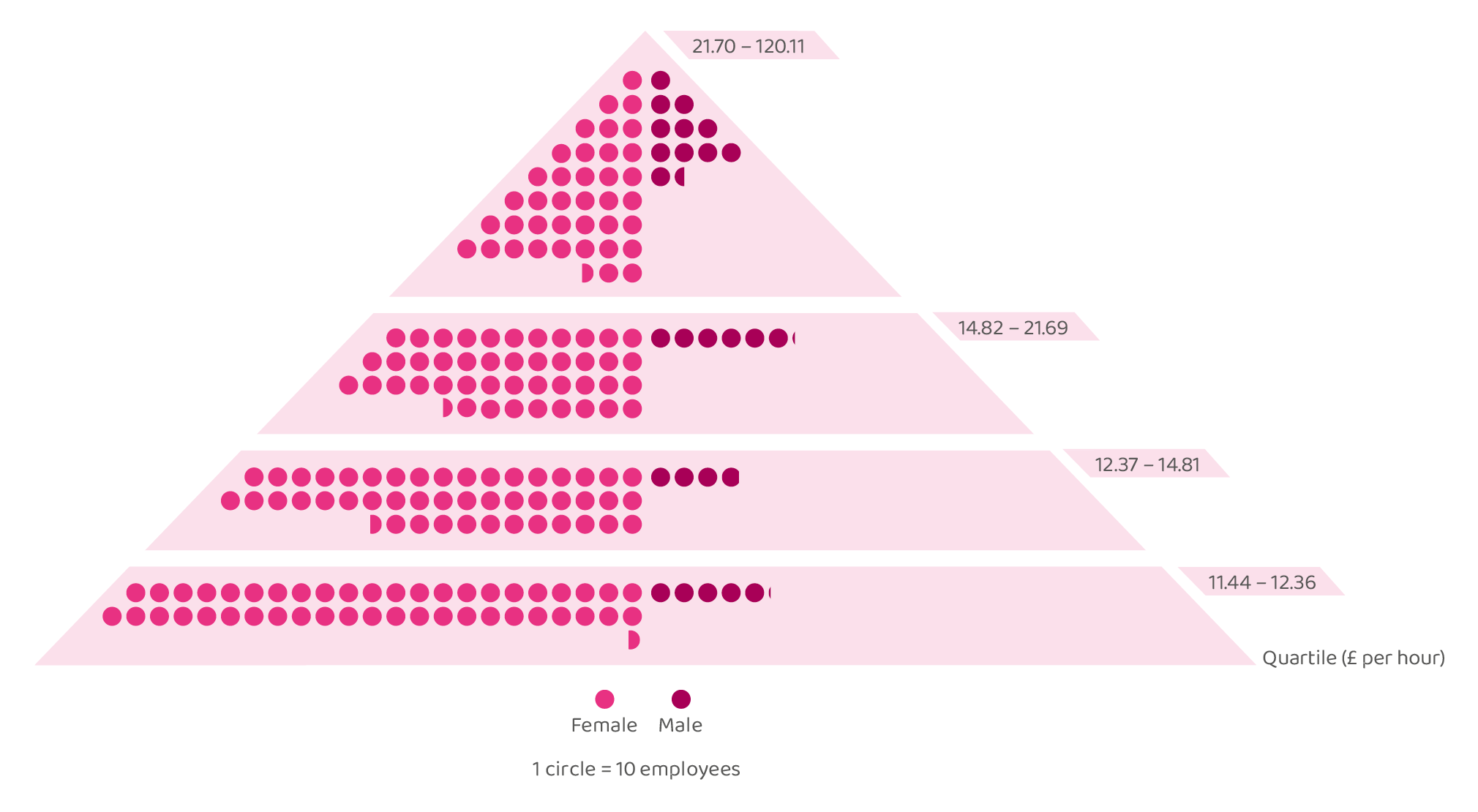PDSA Gender Pay Gap
We are committed to promoting equality of opportunity in employment and selecting employees on merit, irrespective of race, ethnic origin, colour, nationality, sex, age, relationship status, religion/belief or sexual orientation.
We are passionate about having understandable, equitable and transparent reward policies that enable us to achieve our mission and reflect our culture, and we are committed to reducing our gender pay gap.
Under legislation introduced in April 2017, UK employers with more than 250 employees are required to publish their gender pay gap. The gender pay gap reflects the average hourly earnings pay for men and women undertaking the same or similar jobs.
We have a robust benchmarking and job evaluation process that ensures we pay our employees fairly, irrelevant of gender. We continually review our pay and benefits with extensive benchmarking and market research.
PDSA employees are predominantly female, which is representative of animal welfare charities.
2025 analysis
Our analysis shows the following results, calculated in line with mandatory requirements:
The overall difference between men’s and women’s earnings is 20.9% (mean) or 26.3% (median) based on hourly rates of pay at the snapshot date of 2024.
Research suggests that fewer men in the lower pay quartiles drive the gender pay gap. This is a slight decrease of 6.1% in our mean gender pay gap and 3.7% in our median gender pay gap driven by an increase in females in the Upper Pay quartile.
We are continually reviewing our recruitment processes, language and imagery used to ensure that there is no bias, which may be unconsciously attracting more women for the advertised vacancies across all quartiles.
Pay quartiles

The reporting process requires us to split our workforce into four equal quarters and report the proportion of males and females in each of these segments:

PDSA employs a large percentage of females – 87% of the total people employed. The table above shows that when we compare the pay at each of the quartiles, the average pay for males and females is more aligned and our pay gaps close. It is lower than the national average of 13.1% across all quartiles, and in fact, within the lower quartile, there is no pay gap between males and females. Our overall 20.9% pay gap is driven by the fact that the distribution of males within the organisation is unbalanced, with only 33% of males working within the lower and lower middle quartiles – this drives up our mean pay for males. Conversely, we have a strong representation of females at every level of the organisation, which results in a more balanced but lower mean pay for females.
We continue to promote where possible a healthy work-life balance through flexible working and benefits such as flexible hours, hybrid and remote working, wellbeing days, celebration days and holiday trading.
We also have an enhanced maternity and paternity package.
Bonus payments
No bonus payments were made during the reporting period.
Our commitment
We are confident that men and women are paid equally for doing equivalent jobs across our organisation as we have a clear and robust job evaluation system that focuses on the job, not the jobholder.
We remain committed to addressing our gender pay gap by continuing to:
- Review our recruitment methods and training, to ensure there is no unconscious bias to roles within the lower quartiles.
- Focus on areas in the organisation where the gender pay gap is highest.
- Understand our gender pay gap in the wider context of the sectors from which we recruit.
I confirm that PDSA’s gender pay gap calculations are accurate and meet the requirements of the Regulations.
Jan McLoughlin | Director General
